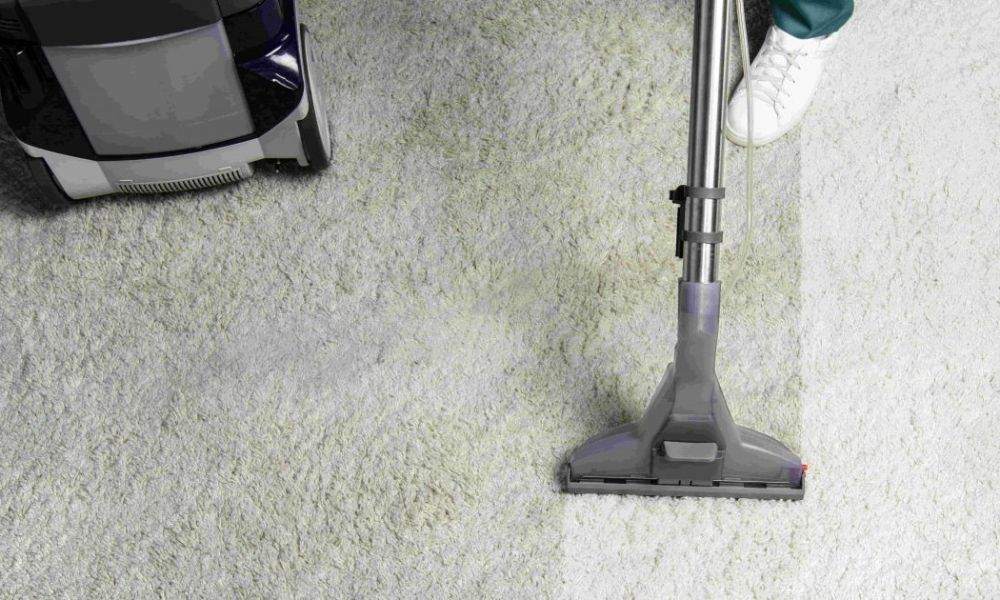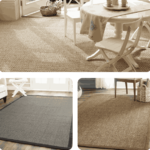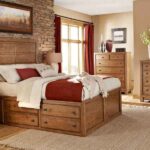When it comes to interior design, the coordination of different components is essential to creating visually pleasing environments. In this context, “Do the carpet and drapes complement each other?” is a commonly asked question. This investigation dives into the finer points of design, texture, and overall aesthetic coherence, going beyond simple color coordination.
Unveiling the Essence
The Cornerstone of Design
- Drapes and carpets are the fundamental components that anchor a space.
- Their part in creating the general atmosphere establishes the mood of the room.
- A feeling of unity is created when these components match, while complexity and surprise are added when deliberate contrast is used.
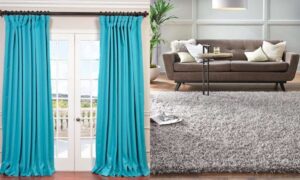
The Dance of Colors
- The essential element of color has a big impact on how well carpets and draperies coordinate.
- Considerate color selection might arouse particular feelings and moods.
- Matching hues create cohesive and well-balanced ensembles.
- Contrasting colors, however, give the image depth and appeal.
- converting the area into a lively and captivating setting.
Texture as a Dimension
- The interaction of textures in the draperies and carpets enhances design intricacy in addition to color.
- While sleek drapes and a patterned carpet add a contemporary edge, a soft carpet and heavy drapes create an opulent and welcoming ambiance.
- The combination of textures improves the appearance as a whole.
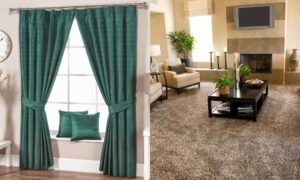
Dimensions and Illumination
Whether to match or contrast carpets and draperies depends largely on the size of the space and the amount of natural light that is available. In smaller spaces, matching tones give the impression of greater space, while in bigger rooms, striking contrasts can be accommodated without becoming overpowering. The perception of color is also influenced by natural light levels, which complicates the process of selecting decisions.
Stylistic Tendencies
- Making decisions is greatly aided by the room’s overall theme and design.
- A monochromatic color scheme can work well in a modern, minimalist room, while eclectic or boho designs embrace a variety of hues and patterns.
- A unified and purposeful design is ensured when the carpet and draperies match the overall motif.
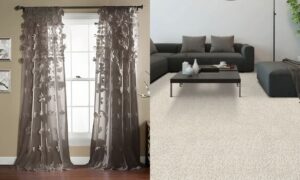
Personal Taste Matters
- Personal tastes are very important while making decisions.
- While some want an eclectic and diversified combination, others prefer a coordinated and streamlined appearance.
- It’s critical to comprehend individual preferences while designing a space that will appeal to its users.
Pragmatic Considerations
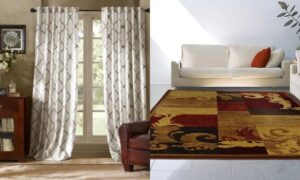
Practicality and Endurance
- Selecting carpet and drapes is influenced by practical factors like durability and upkeep.
- Stains may stand out more on light-colored carpets, and some types of draperies may need special cleaning.
- A long-lasting and functional design is guaranteed when materials are selected with lifestyle needs in mind.
Financial Realities
- Budgetary restrictions are real-world factors that affect the options that are available.
- Although expensive materials can be preferred, limited funds might call for ingenious solutions.
- A well-curated, cost-effective design is produced by combining expensive and inexpensive components without sacrificing style.
End Note
Ultimately, the question of whether carpets and draperies go together reveals the complex realm of interior design. The interaction of color, texture, and personal taste creates a wide range of options for creating a room that fulfills functional requirements and expresses unique flair. Understanding the symbiotic relationship between carpets and draperies is crucial for creating an interior that is both visually attractive and well-balanced, regardless of whether coordination or contrast is chosen.

